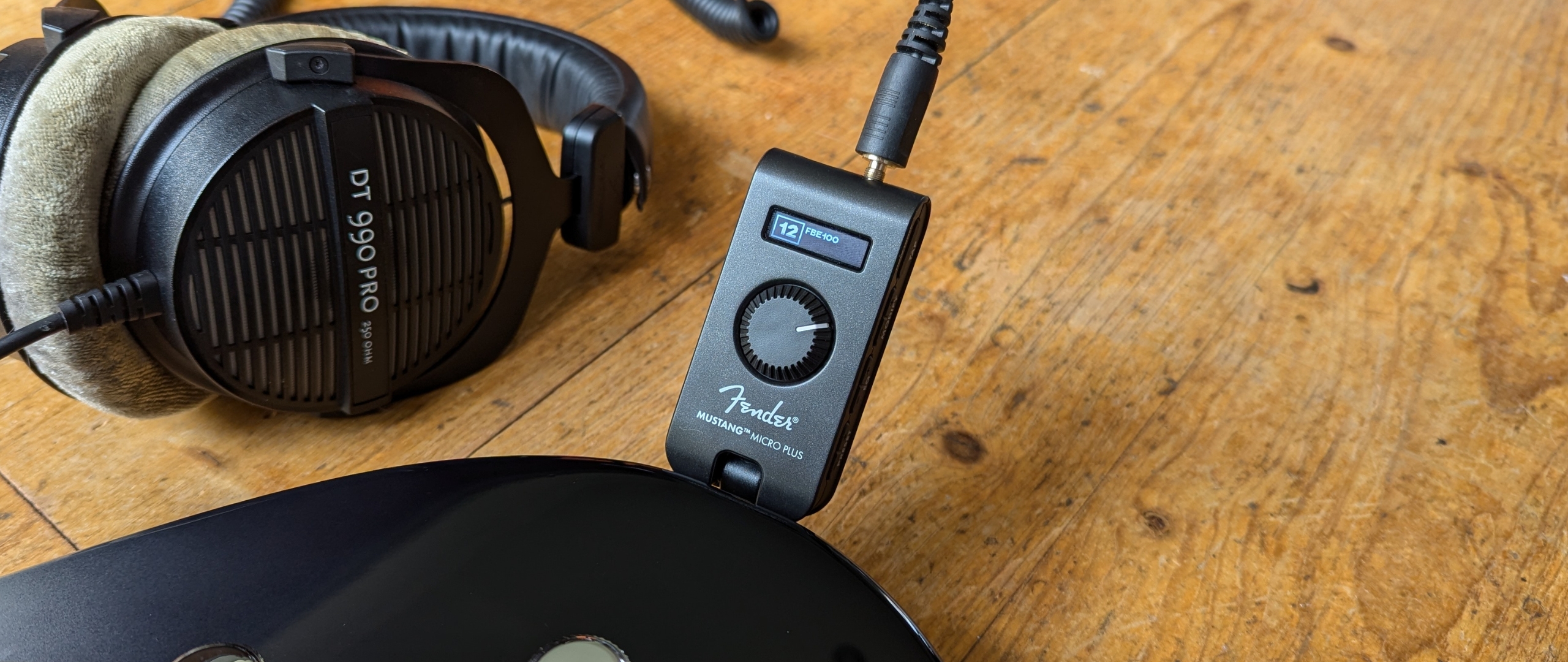Guitar World Verdict
A brilliant option for the practicing guitar player, the combination of ultra-portability, great tone, and reasonable price make the Fender Mustang Micro Plus a worthy successor.
Pros
- +
Super portable size
- +
Fantastic array of tones
- +
Very simple to use
- +
A brilliant option for silent practice
Cons
- -
No quick way to switch presets
- -
Bass gets overloaded at high volumes
You can trust Guitar World
As much as I love cranking my tube amp and letting it rip, more often than not it’s an impractical thing to have at home. Obnoxiously loud even on its lower power setting and ridiculously heavy, aside from rehearsals and gigs I seldom get to use it to its full potential.
These days you’re far more likely to find me using my Spark Mini or HX Stomp at home, because they’re the pragmatic choice for modern living - read: not annoying for your partner, neighbors, or anyone within a half-mile radius.
As a relatively recent convert to devices like headphone amps for guitar, it's undeniable that they are an excellent choice for the practicing guitar player and, whisper it, nowadays you really can’t tell that much difference in tone from the real deal. Today’s subject, the Fender Mustang Micro Plus, looks to build on the success of the original, and make a great case for becoming your practice amp of choice.
Paired with your favorite guitar amp headphones, the Mustang Micro Plus offers up a huge selection of amps and effects, with plenty of features in a teeny-tiny package you can take anywhere. There’s a lot of competition that has emerged since the original Mustang Micro was released, especially with the likes of the Boss Katana Go, so let’s see if it retains its crown.
Fender Mustang Micro Plus review: Features
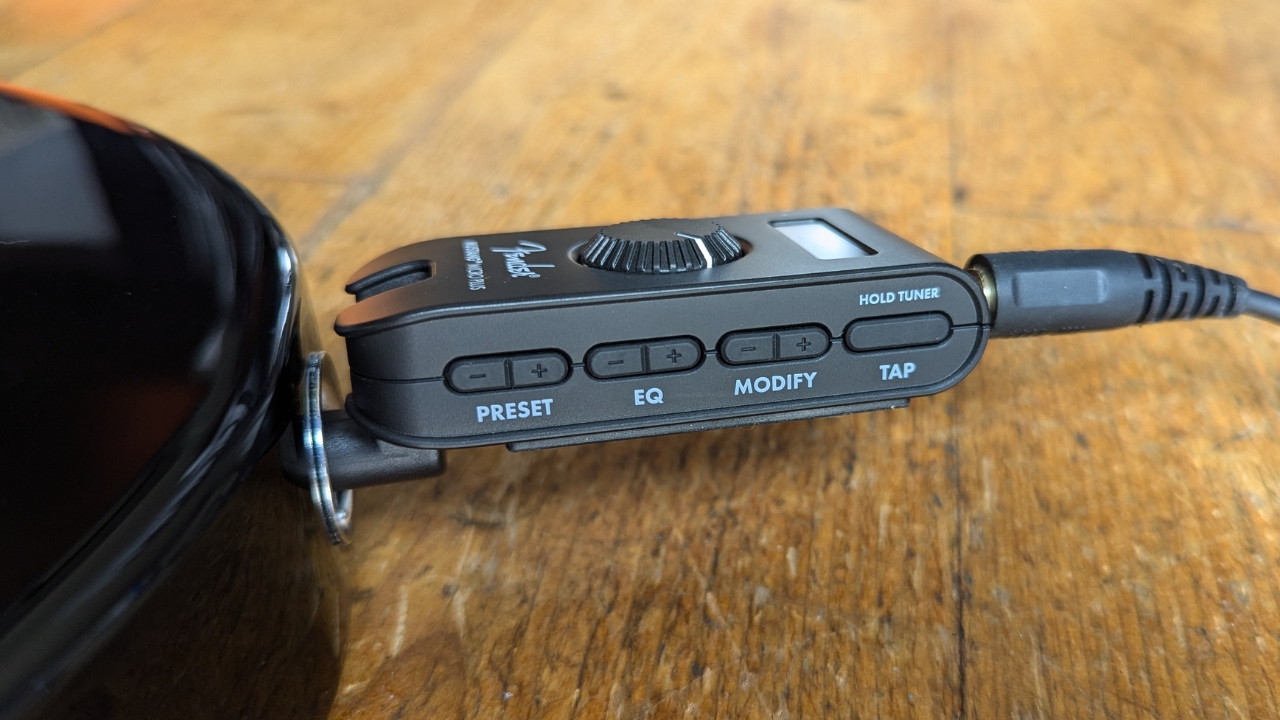
The Fender Mustang Micro Plus ups the ante on its predecessor with a huge selection of tones, packing 25 amp and effect simulations into its tiny black housing. 100 preset slots mean you can now save custom tones, significantly expanding the flexibility versus the original.
There’s now a small screen on the front of the fascia, doing away with the inscrutable color coding system from the previous model. It also allows for a simple chromatic tuner to be displayed, making the Mustang Micro Plus an even more complete practice solution. Below the display, the large volume knob has retained its place for controlling the level of the unit.
The controls are roughly similar, with plus and minus buttons for preset, EQ, and modify options that let you change tones, adjust the EQ, and alter particular effect parameters. The tap tempo button doubles as a way to engage the tuner if you hold it down, and on the opposite side you’ve got a power switch and a button to save your presets. Above the power button, a flashing light lets you know how much battery the unit has left via a traffic light system.
Fender Mustang Micro Plus review: The app
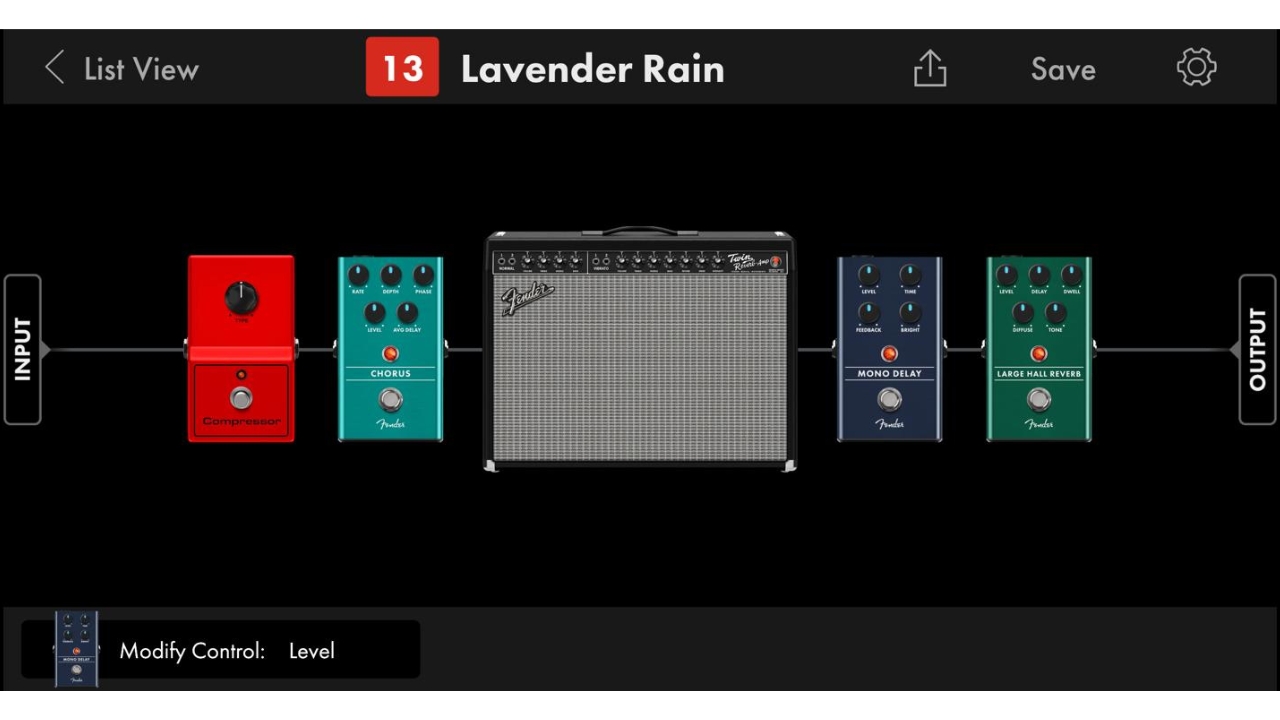
Along with a nifty screen and preset function, the Mustang Micro Plus now has companion app capabilities that make tone tweaking much easier. Using a beta version of the Fender Tone app I was able to tweak tones in depth, adjusting all the parameters of the pedals and amps with ease. The performance of the app was impressively smooth and responsive too, even though it was a test version. It looks fantastic, with the amps and effects rendered in super high resolution.
The app operates with your phone in horizontal mode, which definitely helps with the visibility of the whole signal chain. The preset view lets you see everything on one screen, with a simple tap allowing you to dive into more detail on the particular pedal or amp while swiping up or down changes your preset. You can also switch presets by using the buttons on the physical unit and it will respond in kind.
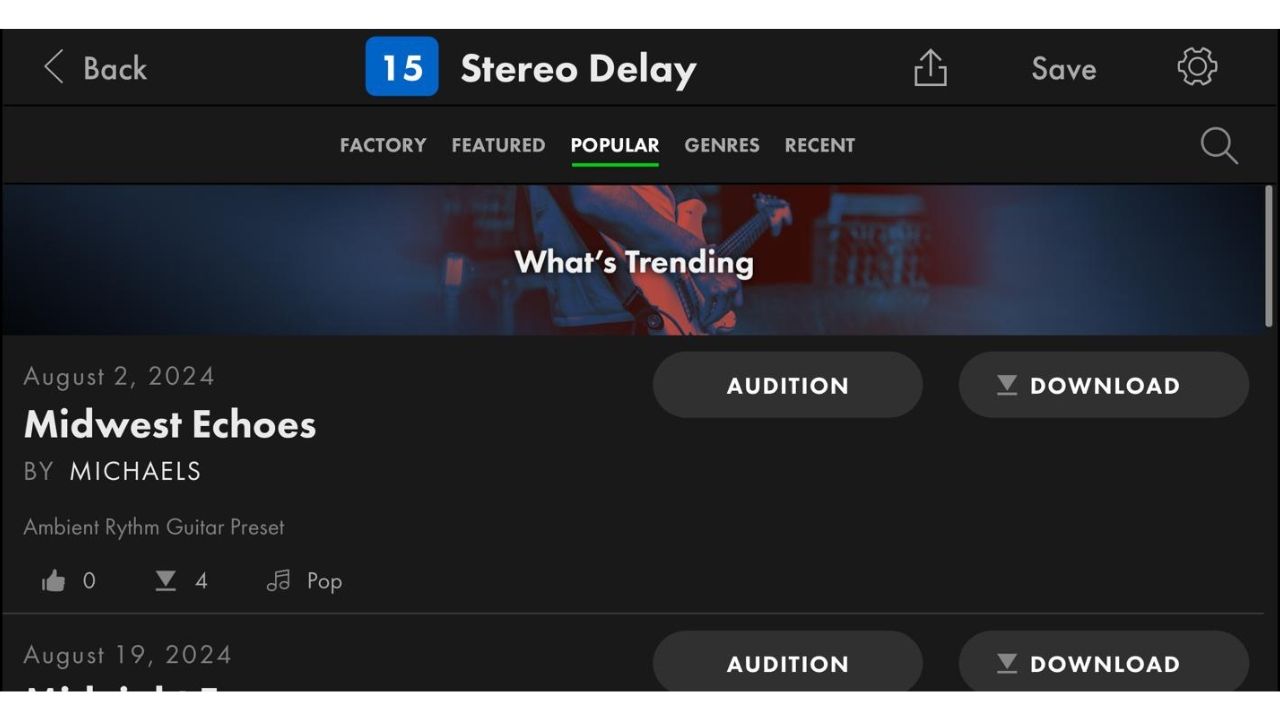
The app allows you to set the USB volume level, which can be handy if you’re recording with your phone or laptop, and also lets you change what the modify button does. You can assign this to any effect parameter from the pedals in your signal chain, although interestingly it doesn’t let you assign it to the amp parameters.
Although I wasn’t able to try it due to the Mustang Micro Plus being unreleased while
I tested it, there are also downloadable tones available when you tap the cloud icon in the list view. They’re sorted by factory, featured, popular, genres, and recent, so will no doubt be populated with user and perhaps artist-generated tones once it comes to release day.
Fender Mustang Micro Plus review: Usability
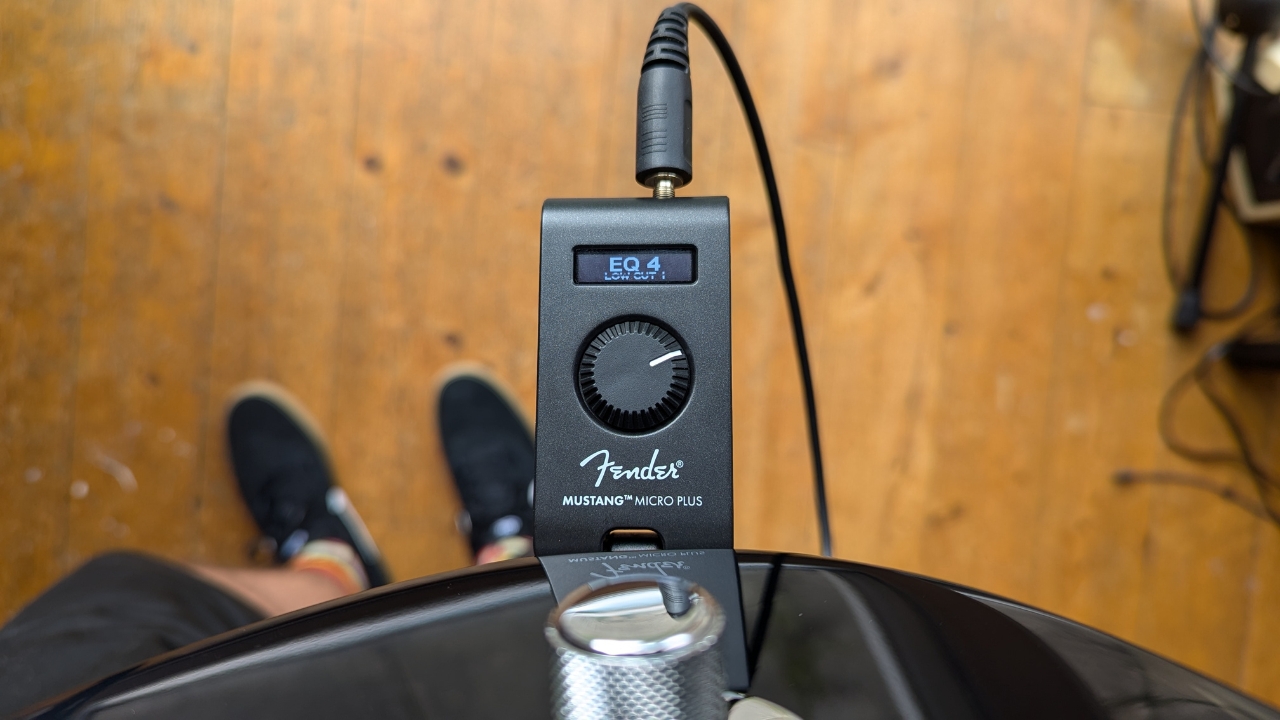
Using the headphone amp with just the buttons is certainly doable if you’re not the sort to want your smartphone interrupting your practice too. It’s simple to switch presets while you’re playing thanks to the hinged input that lets you maneuver the unit to wherever you like. That said, it does take a bit of practice remembering where the buttons are and when I first got it more often than not I’d tweak the EQ instead of hitting the intended preset button.
The EQ gives you access to a selection of presets that cut or boost the lows, mids, or highs. It’s nice to have but to be honest I found myself keeping the presets original setting most of the time, as I found the cuts to be a little too harsh for my taste. The modify button allows you to adjust a particular effect parameter, which could be delay time, delay feedback, reverb level, amongst many others. Once you’re done tweaking just hold the save button then press again to confirm.
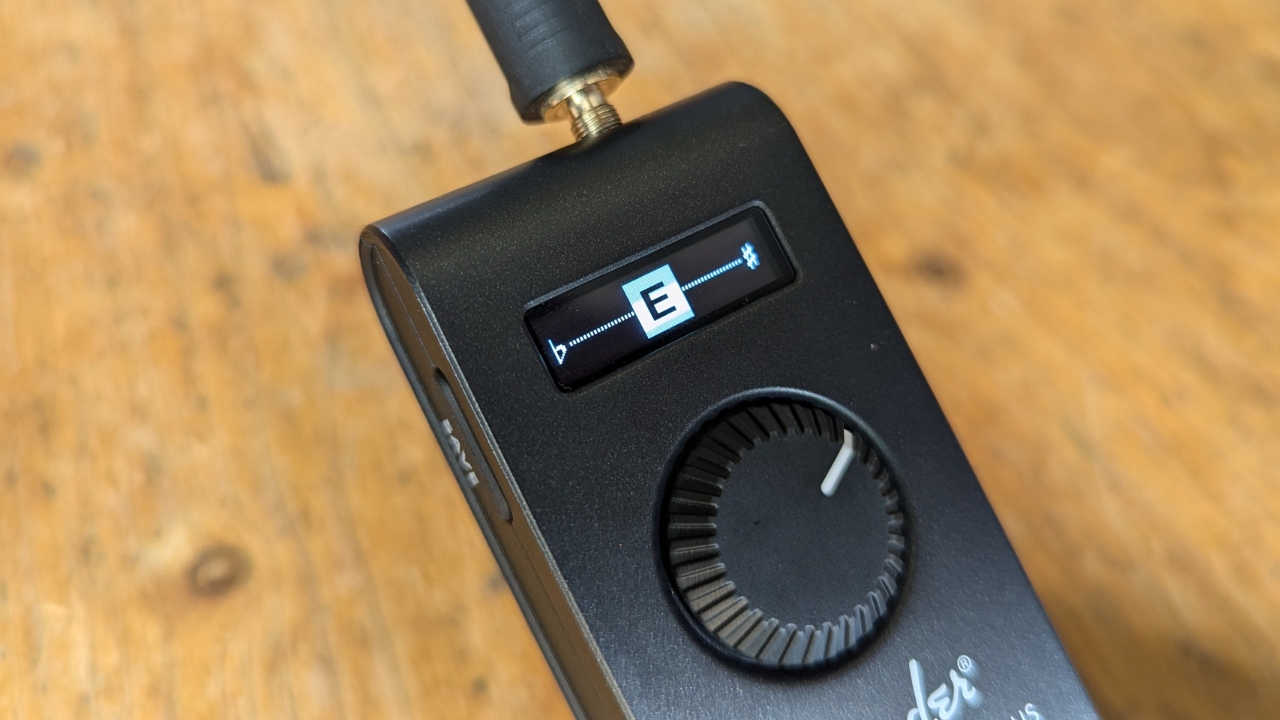
The ability to dial in a tone via the buttons is a nice option in a pinch, but to be honest you’ll be much better served using the app, especially as not all the presets will sound great with your guitar of choice - more on which in the sounds section of this review.
One of my favorite ways to use the original Mustang Micro was plugged into my phone to record off-the-cuff ideas and the occasional video of my own playing for social media when I’m feeling brave. It works just as well on my Pixel phone as the last model, replacing your phone microphone when you plug it in via USB-C. I’ve had mixed results trying this with other devices, but the Mustang Micro delivers excellent sound quality, making it super easy to record guitar videos if that’s your bag.
Fender Mustang Micro Plus review: Sounds
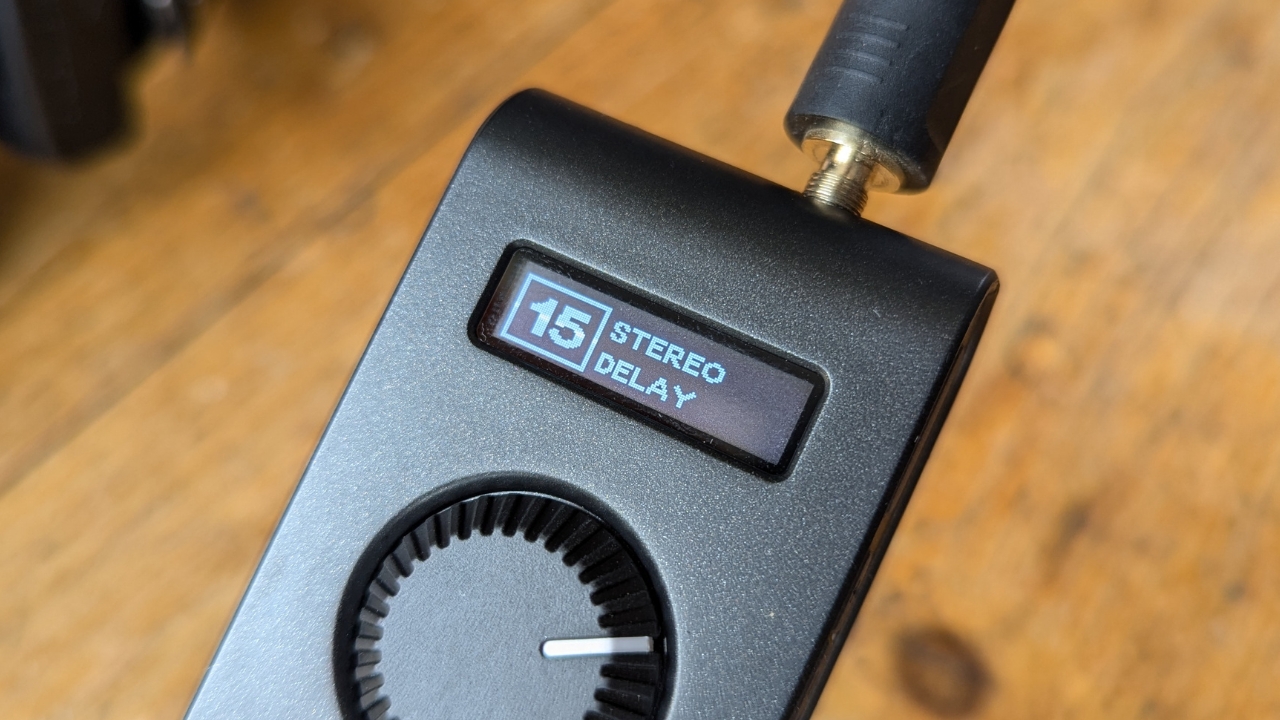
Getting started with the preset tones I was instantly impressed with the offering. It’s noticeably improved from its predecessor, with a lot more depth to the distorted tones which were a little weak on the original. As I've found with a lot of modeling amps, its the cleaner tones where it really shines, and the Twin tones in particular are fantastic.
As you’re playing with headphones the effects really shine too. The reverbs are luscious, adding a real sense of space to your guitar tone, whilst there are some superb stereo delay effects available. Everything is really nice and crisp, and there’s a myriad of inspiring presets for you to build upon that cover everything from post-rock to metal to country and blues.
I did notice that it was getting overwhelmed whenever I used something too bass-heavy with the volume cranked to the max. The neck pickup of my Tele was enough to push it into some nasty noise-making on certain presets, likewise when I tried my baritone guitar which is tuned to drop G#. It’s only noticeable on certain presets, but it is a little annoying once you discover it. The bass cut EQ can remedy this somewhat, but then it ends up taking away quite a bit of the heaviness which for me kills the overall sound.
Turning the volume down remedies this, and it's only a small niggle amongst a huge selection of fantastic-sounding amp and effects models. For such a small unit it delivers fantastically well, and that app compatibility does away with one of the major shortcomings of the original Mustang Micro, giving you more flexibility of tone and if you prefer, engaging with it via your phone instead of the physical buttons.
Fender Mustang Micro Plus review: Final verdict
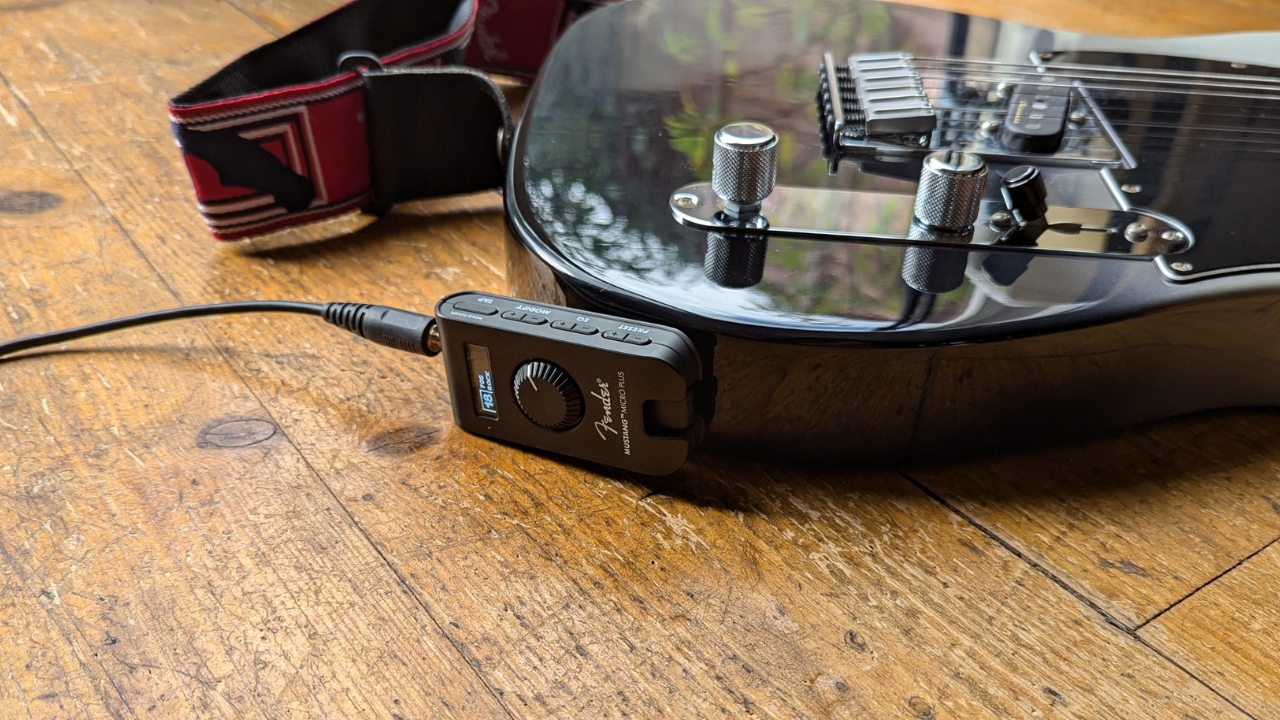
A few niggles aside, the Fender Mustang Micro Plus is very much the upgrade that was needed for one of the most popular headphone amps for guitar. The addition of a small screen, app compatibility, and the ability to save presets makes it a worthwhile practice companion that costs relatively little.
Some will bemoan the lack of a quick way to switch presets, which can hinder you when trying to play along with certain songs. Despite this, I think it’s a fantastic option for playing at home or on the go, with ease of use and fantastic guitar tone at the core of the offering.
Fender Mustang Micro Plus review: Specs
- Price: $149.99/£149/€169
- Amp models: 25
- Effects models: 25
- Controls: Preset, EQ, modify, tap/tuner, on/off switch, save, volume knob
- Connectivity: 1/8-inch headphones, USB-C
- Contact: Fender

Matt is a Junior Deals Writer here at Guitar World. He regularly tests and reviews music gear with a focus on guitars, amps, pedals, modelers, and pretty much anything else guitar-related. Matt worked in music retail for 5 years at Dawsons Music and Northwest Guitars and has written for various music sites including MusicRadar, Guitar Player, Guitar.com, Ultimate Guitar, and Thomann’s t.blog. A regularly gigging guitarist with over 20 years of experience playing live and writing and recording in bands, he's performed everything from jazz to djent, gigging all over the country in more dingy venues than you can shake a drop-tuned guitar at.
“I suppose I felt that I deserved it for the amount of seriousness that I’d put into it. My head was huge!” “Clapton is God” graffiti made him a guitar legend when he was barely 20 – he says he was far from uncomfortable with the adulation at the time
“I was in a frenzy about it being trapped and burnt up. I knew I'd never be able to replace it”: After being pulled from the wreckage of a car crash, John Sykes ran back to his burning vehicle to save his beloved '76 Les Paul
“It holds its own purely as a playable guitar. It’s really cool for the traveling musician – you can bring it on a flight and it fits beneath the seat”: Why Steve Stevens put his name to a foldable guitar
